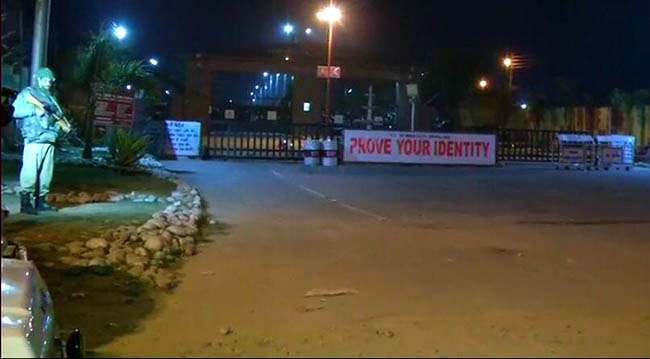JK News Today
It is easy to see inside several military camps, and the holes in the perimeter walls of many are plugged with iron-sheet jugaad.
The February 10-11 attack was not the first time the Sunjuwan Army camp in Jammu was targeted. In June 2003, two fidayeen had entered the camp about 4.30 am and attacked sleeping soldiers. They were said to have cut a wire fence on their way in; this time, at least three terrorists are said to have entered through a nullah. In 2003, 12 soldiers were killed. Then Army Chief Gen N C Vij had visited the camp and ordered more fortifications there and at other camps that were protected by only barbed wire. This time, five soldiers and a civilian have been killed. On February 10, as the attack was under way, the government sanctioned Rs 1,487.27 crore for perimeter fortification at military installations across India, reports Indian Express.
Old story, new question
Over the last 15 years or so, Army camps in the Jammu region have been particularly vulnerable to militant attacks. In November 2016, fidayeen targeted an Army camp in Nagrota in Jammu district, killing seven soldiers. Earlier, in March 2015, two Army personnel were killed in an attack on a camp on the Jammu-Pathankot National Highway in Samba district. Only the day before, militants had stormed a police station in Kathua, killing seven people. Back in 2003, less than a month after the attack on Sunjuwan, fidayeen had entered the Army camp in Tanda, north of Jammu, and killed eight men, including a Brigadier. The biggest attack came in 2002 in Kaluchak, where terrorists targeted a tourist bus and an Army camp, killing 38.
The Sunjuwan attack over the weekend has raised new questions. How to secure a camp that is in the middle of a civilian area without turning it into a fortress? Is technology the answer? Is there more to be done, and should the Army make a long-term plan to secure such camps?
Too many, located mid-city
Former and serving Army officers said any plan must be multi-pronged, of which camp security is one part, and consolidation — squeezing of smaller camps into bigger ones — another. But the plan must also extend to bringing down the levels of infiltration from across the border.
Jammu city alone has five major Army camps under the Western Command — Chatha, Ratnuchak, Kaluchak, Satwari and Sunjuwan — besides a couple of smaller camps. Each of these small and large bases is crowded in by civilian residential neighbourhoods on all sides. Sunjuwan, spread over an area of 7 sq km, is a classic example. The Jammu-Srinagar Highway, lined with hotels and shopping malls, lies to one side of the camp; on the other three sides, and especially at the back, are bustling civilian settlements. The land around Army camps is much sought after, and the demand drives up prices.
“When a camp is bang in the middle of a civilian area, it’s difficult to monitor who is coming, who is seeing what. It makes it very easy to recce and scope out the place for an attack, plan the routes to take, etc.,” Lt Gen Deependra Singh Hooda (retd), whose last posting was as GoC-in-C of the Udhampur-based Northern Command, said.
Open access, holes in walls
The chain of Army camps in Jammu city came up before the onset of militancy, and although Jammu is close to the International Border, all the camps are family stations. The family quarters, with women and children, are visible from tall buildings outside the garrison. The militants clearly planned to target these more vulnerable structures.
Sunjuwan also has two schools — the Army Public School and a Kendriya Vidyalaya — that admit children living both inside the camp, as well as outside.
The camps are typically massive sprawls; some offer civilians easy access, and public thoroughfares sometimes cut across them. All have perimeter walls, but their maintenance is a major challenge. After the January 2016 Pathankot attack, a committee headed by Lt Gen Philip Campose had recommended strengthening the fortifications, including “smart” access control, and fencing with sensors and alarm systems to detect intrusions in real time.
But nearly two years after the Campose report was submitted, Army camps typically still use jugaad to secure themselves, a former Western Command officer said. What this usually means is to use Corrugated Galvanised Iron sheets to plug gaps in the wall.
“For two years we have had a plan in place for securing the garrisons. Detailed plans were made as to what was required for each garrison, the boundary walls, some sort of smart fencing, senors, a control room where someone can monitor the perimeter,” Lt Gen Hooda said.
Sensible, dynamic solutions
Plans, in fact, started to be drawn up after the March 2015 Samba attack, and all they have required is funds. The money has now been allocated, but it could take a year or more to put systems in place. ( Courtesy Indian Express)




